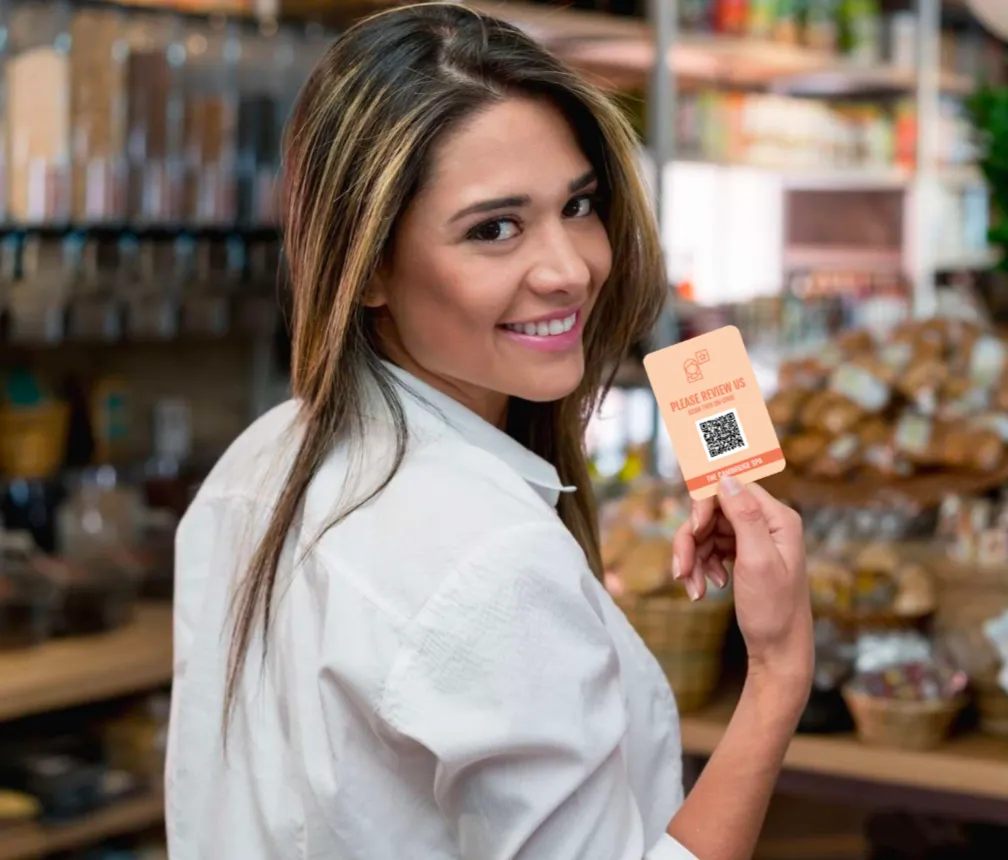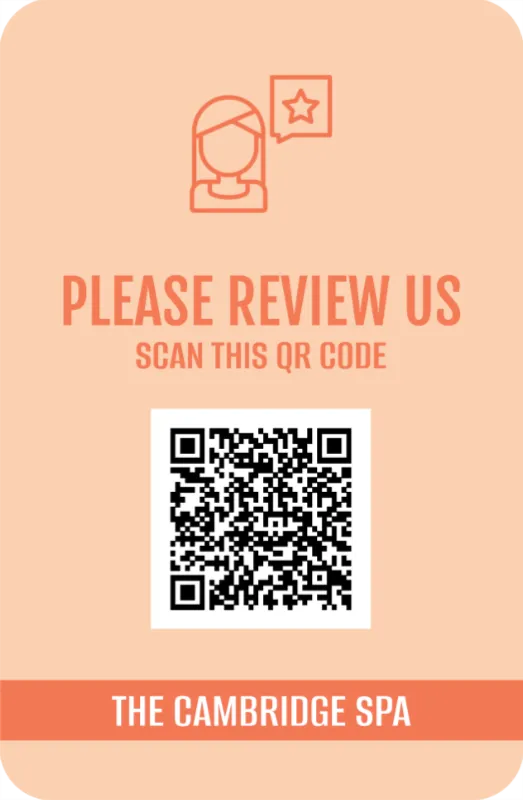What are QR Codes?
QR codes, or Quick Response codes, are 2D barcodes that store information in a pattern of black squares on a white square grid (as seen on the QR Card here).
To scan a QR code you need a smartphone or QR code scanning device. Mobile devices with built-in cameras can easily read QR codes using the built-in QR Scan app.


The 25 Uses of QR Codes
QR Codes are commonly used for a variety of purposes, including:
Information Sharing
QR codes can store contact information, website URLs, Wi-Fi network credentials, and other data that can be quickly scanned and transferred to a user’s device.
Marketing and Advertising
QR codes are often used in marketing materials, such as posters, flyers, and product packaging. Scanning the code can lead users to a website, promotional video, or other digital content.
Payment Transactions
Many mobile payment systems use QR codes for transactions. Users can scan a merchant’s QR code to make a payment or vice versa.
Ticketing and Boarding Passes
Airlines, theatres, and event organisers use QR codes on tickets and boarding passes. Scanning the code grants access to the event or transportation.
Authentication and Security
QR codes are employed for two-factor authentication and secure login processes. They provide a convenient way to verify identity.
Healthcare Applications
QR codes have found applications in healthcare, such as patient records, medical history, or providing access to relevant health information. During the COVID-19 pandemic, QR codes were used for contact tracing and check-ins at public places.
Education
QR codes are used in educational materials and classrooms. Scanning a QR code can lead students to additional resources, online content, or interactive materials.
Navigation and Location Services
QR codes can encode geographic coordinates, helping users navigate to a specific location when scanned. They are sometimes used in tourist attractions or public spaces to provide additional information.
Event Management
QR codes simplify event management by facilitating attendee check-ins, tracking attendance, and providing access to event-specific information. They are commonly used in conferences, concerts, and exhibitions.
Social Media Integration
Some businesses use QR codes to connect users directly to their social media profiles. Scanning the code can lead to a social media page, making it easier for users to follow or connect with a brand or individual.
Product Tracking
QR codes are used in supply chain management for tracking products and managing inventory. They help streamline processes and enhance efficiency.
Customisation and Branding
QR codes can be customized with different colors and logos to match a brand’s identity. This allows businesses to integrate QR codes seamlessly into their marketing materials while maintaining a consistent visual identity.
Real Estate Listings
QR codes on property listings or “For Sale” signs lead potential buyers to detailed information about a property, including photos, videos, and contact details.
Mobile App Downloads
QR codes are commonly used to simplify the process of downloading mobile apps. Scanning the code redirects users to the app store, where they can quickly download and install the application.
Interactive Marketing Campaigns
QR codes are frequently employed in interactive marketing campaigns to engage users in a more dynamic way. They can lead to interactive games, surveys, or exclusive content, creating a more immersive experience for consumers.
Restaurant Menus and Ordering
With the rise of digital menus and contactless ordering, QR codes have become common in restaurants. Scanning a QR code on a table can bring up the menu on a customer’s smartphone, allowing them to place orders without physical menus.
Emergency Information
QR codes on identification cards or bracelets can store emergency contact information, allergies, or other critical details. This can be helpful in providing quick access to vital information in case of emergencies.
Virtual and Augmented Reality
QR codes are used as markers in virtual reality applications. They help devices recognise and track objects, enabling the overlay of digital information.
Library and Information Systems
Libraries and educational institutions use QR codes for cataloging and managing books. Scanning a code can provide information about a book, its availability, or even lead to additional digital resources.
Authentication and Anti-Counterfeiting
QR codes are employed to verify the authenticity of products and prevent counterfeiting. Consumers can scan a code to confirm if a product is genuine and access additional information about its origin.
Employee and Visitor Management
QR codes are used in workplaces for attendance tracking, visitor registration, and access control. Employees and visitors can scan codes for entry, creating a streamlined and secure process.
Language Translation
In international settings, QR codes are used to provide language translations for signs, menus, and other informational materials. Users can scan the code to access translations on their smartphones.
Supply Chain Transparency
QR codes play a role in enhancing supply chain transparency by providing consumers with information about the source, manufacturing processes, and ethical practices related to a product.
Job Application and Recruitment
Some companies use QR codes in recruitment processes. Applicants can attach a QR code to their resume, which, when scanned, directs recruiters to an online portfolio, LinkedIn profile, or additional documents.
Environmental Sustainability
QR codes are utilised in sustainable practices, such as product traceability and providing information about the environmental impact of a product or packaging.